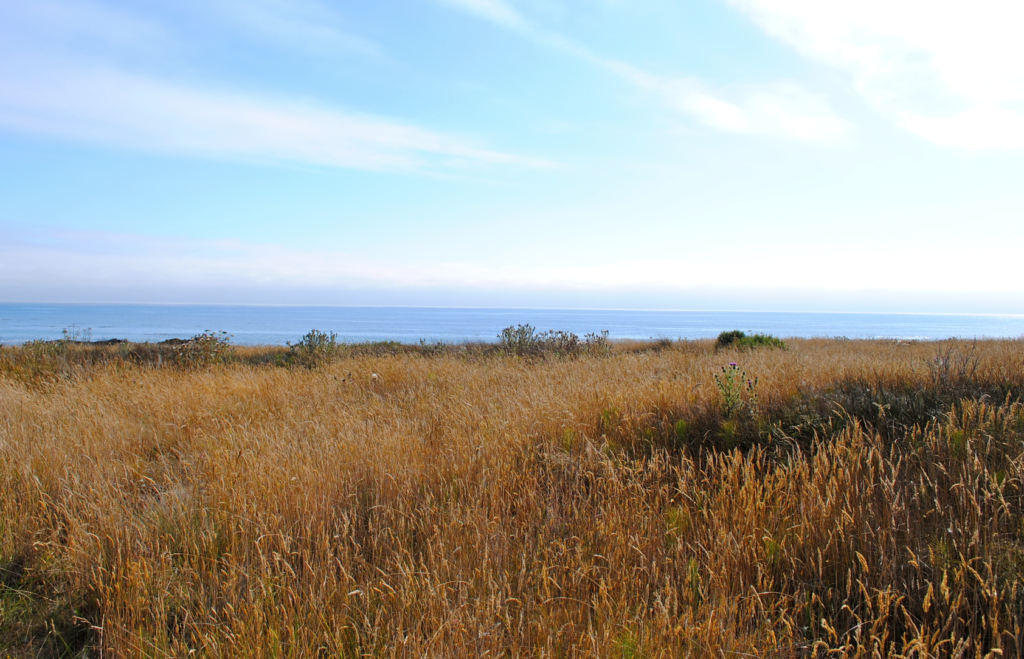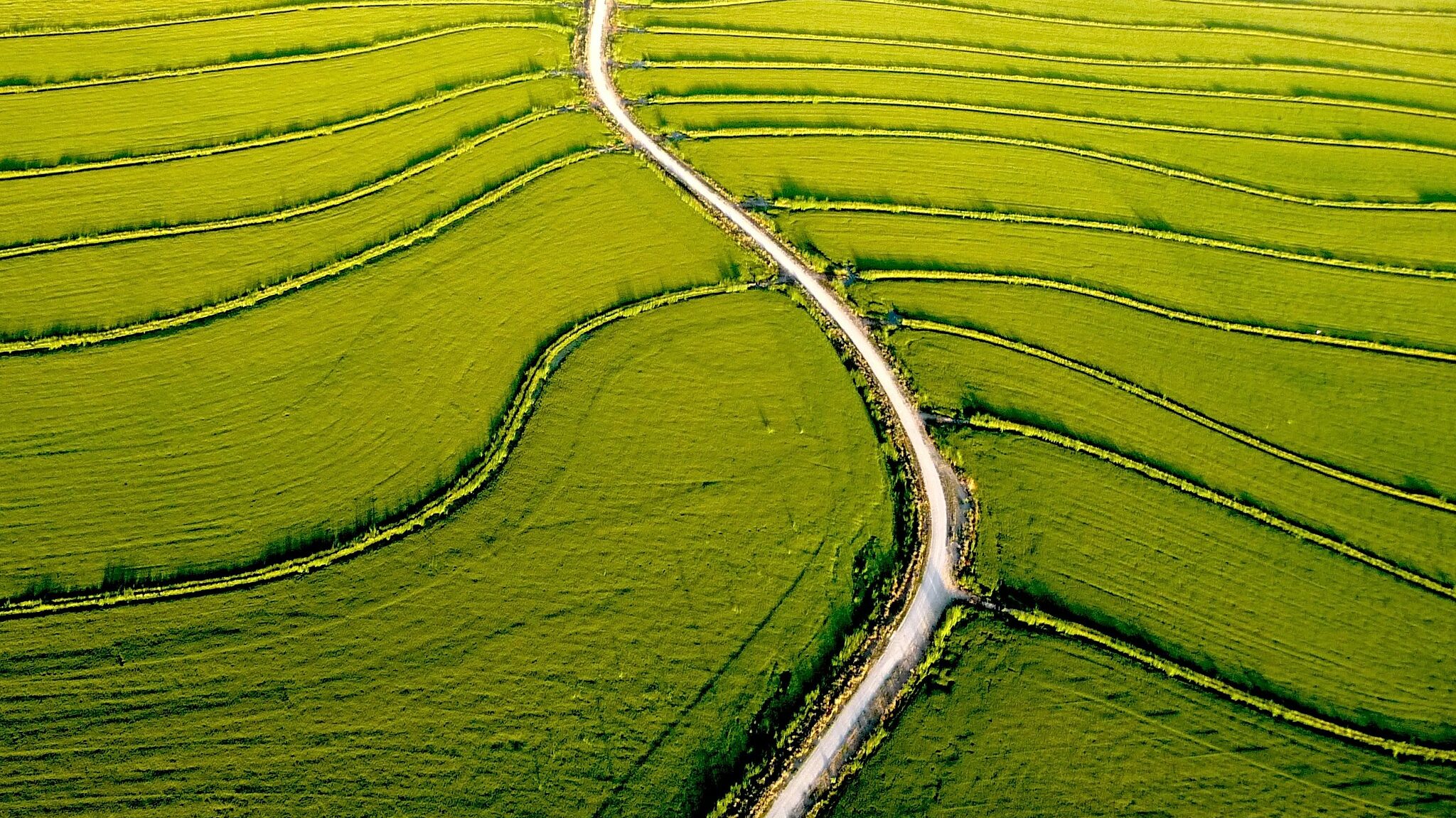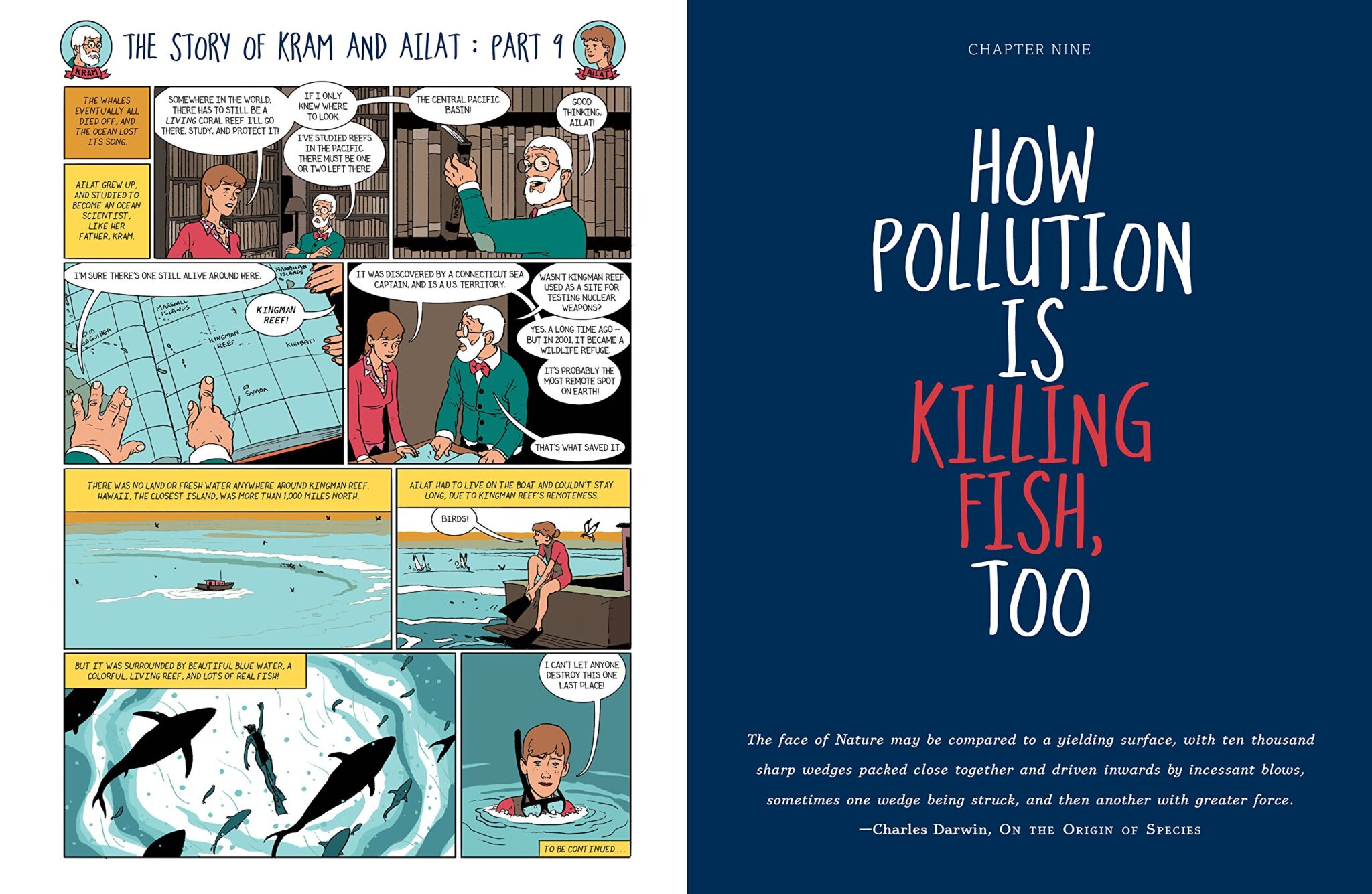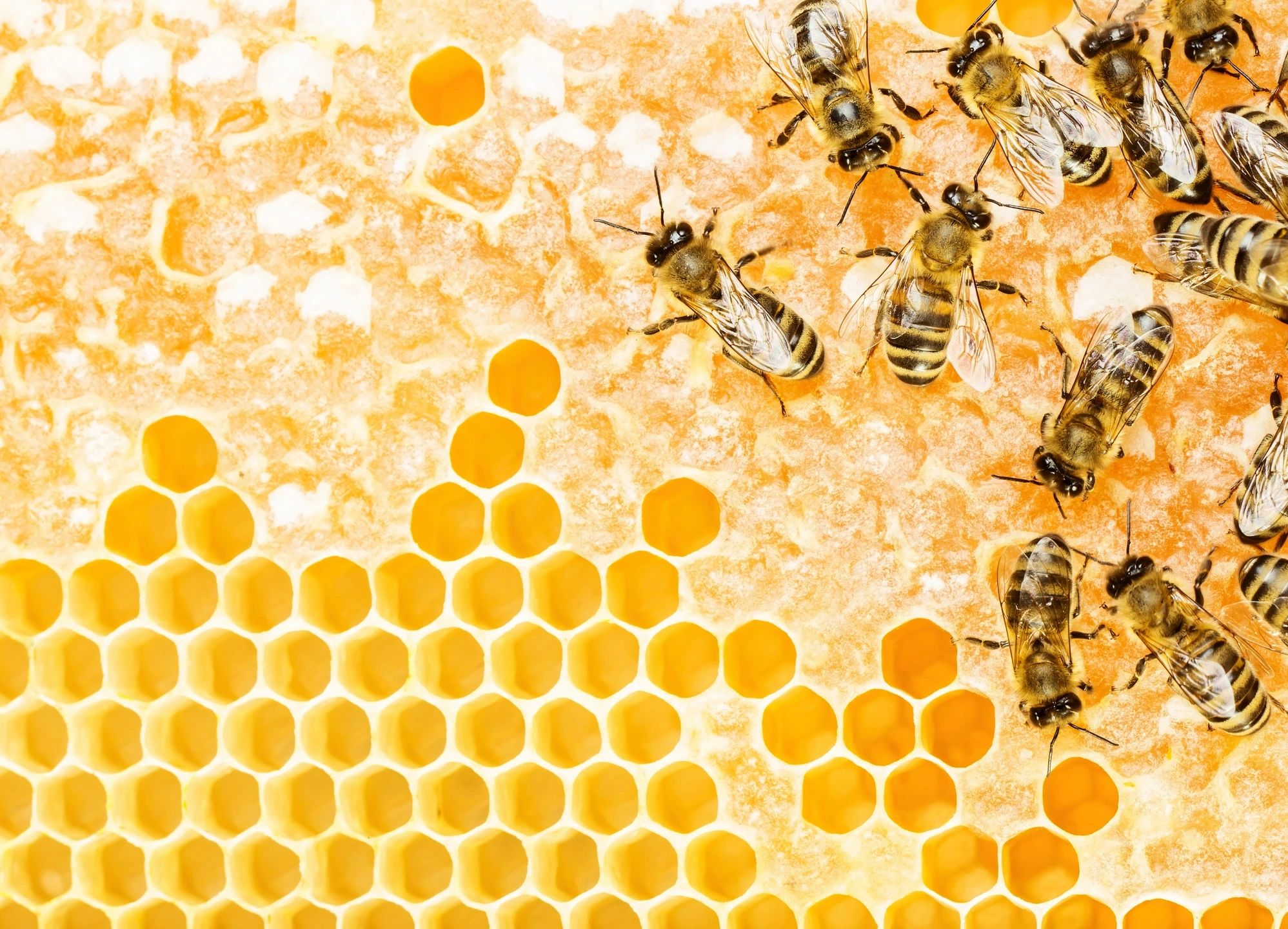Population growth and climate change are making water an even more scarce resource. Does agriculture have the power to reduce water shortages?
This article is part of a series about key science policy issues. Please use these articles to become an informed voter, ask political candidates about the issues, and put every candidate on record about science.
This time of year in California’s Central Valley, it’s easy to see where the Golden State gets its nickname. Golden sun shines on golden grasses of rolling golden hills, parched after so many months without rain, which is unlikely to return for at least several more weeks.
Even so, there are signs of water as I head northward. Trucks hauling mountains of tomatoes and garlic chug along on Interstate 5. Canals wind in and out of greener areas of agriculture, false rivers with concrete shells stretching away farther than the eye can trace them. Signs label row after row of the valley’s bounty: grapes, lemons, mandarins, cows, repeat.
But other signs raise the question of whether the canals are enough, both in this season’s hot sun and in future seasons. One billboard cries out against a “Congress-created Dust Bowl,” while another asks, “Is growing FOOD wasting water?” with stock images of kids scratching their heads to drive the point home. These reappear with some regularity and slight shifts in wording as I continue north to Sacramento, where many decisions are made about how much water can go where.
There’s a whole world of freshwater beyond bathtubs, lawn sprinklers, and water bottles. It’s hard to take into account when it’s not directly in front of you on a day-to-day basis, but we use water for everything: to grow our food; in the manufacture of products we use; to transport cargo; in the production of some of our energy. And water is vital to ecosystems that in turn are vital to our economy, recreation, and the health of the planet.
Did you know that smartphone touchscreens can now detect contaminants in water samples?
But two forces already threaten this crucial natural resource and will continue to do so throughout the future of the United States: population growth and climate change.
Two national-scale studies, both published this year, look at the effectiveness of some mitigation tactics when it comes to protecting and utilizing our water supply. Based on the results, and the deep-seated emotions often tied to our livelihoods, some farmers along Interstate 5 and on other irrigation-dependent croplands may not like the answer.

The fourteen futures
The first study, led by Dr. Thomas Brown of the US Forest Service in Fort Collins, Colorado, and published in February 2019, evaluated four commonly proposed solutions to water shortages: groundwater mining, reducing the natural flow of streams, increasing reservoir capacity, and transferring water away from agriculture. Brown and his fellow researchers—Dr. Jorge Ramirez of Colorado State University and Dr. Vinod Mahat, a hydrologist and civil engineer at Stantec—examined 204 watersheds across the contiguous United States, pitting them against 14 theoretical futures. The researchers mapped data in three 25-year periods spanning 2021 to 2095, as well as in a “past” category from 1986 to 2010.
The 14 futures were a wide net cast in an attempt to capture how climate change and population growth will impact our water supply. To come up with these scenarios, the researchers took two greenhouse gas emission levels and matched each of them with seven different climate models that contained enough detailed data for water yield projections. For each possible future, they assumed water efficiency technology will continue to improve as it has for the past several decades. They also assumed people will only use renewable water supplies (in other words, no groundwater mining).
The second study, which delved further into agricultural and municipal water demands, was published in August 2019. Travis Warziniack of the US Forest Service Rocky Mountain Research Station in Fort Collins, Colorado, authored the study with Brown.
Biotech & Digital Agriculture: The Smart Farming Revolution
Flood or famine
While both studies navigate the unknown, here are the things we can say with some certainty: the population is increasing, and unless we get a handle on greenhouse gas emissions, we’re on a crash course with climate change. According to the February study, the US population is expected to hit 514 million by 2100, up from 308 million about a decade ago, and temperatures would rise nationwide across all 14 future projections.
Since higher temperatures correlate to higher evaporation rates, the researchers expect this to reduce water yield, or how much water is left after considering evaporation and plants’ water intake. Models show that climate change is expected to lead to about 20 percent less available water by 2060, as stated in Warziniack and Brown’s August 2019 study.
Some places will likely receive less precipitation than they already do, being further affected by higher temperatures. Other places such as the northern regions of the United States are projected to see more precipitation—though higher temperatures could cancel out any increased rainfall or snowfall.
Of the 14 futures, six showed increases in water yield across the United States through 2070, while eight showed decreases. On a geographical scale, about 70 percent of the basins studied showed less water yield in future years. The most extreme decreases in water availability are projected to occur in the Southwest, Florida, and the middle to southern Great Plains states.
There is a bit of good news, though: the February study reports that overall water withdrawals across domestic, thermoelectric, and irrigation for agriculture use sectors have decreased from what they used to be. People are using less water per capita in some areas, and water efficiency continues to improve with technological development. So it’s not entirely doom and gloom, but a higher population will mean more water withdrawals overall. While we’re not being as wasteful with water as we used to be, increased conservation will likely not be enough to mitigate the total impacts of climate change and more people in the country.
Small cuts, big changes
So what does all this mean for actually solving the problem of agriculture and water shortages? The February study points to two main paths, as with any limited resource: enhancing supply and reducing demand. To reduce demand, Brown and colleagues point toward actions including limiting water withdrawals, adjusting water use rates, improving conservation technology, and relaxing restrictions on agricultural transfers (taking water that would be used to grow crops and livestock and using it elsewhere).
As of 2010, agriculture irrigation often makes up over 75 percent of annual US water consumption and is the primary water use in most basins, according to the study. Moreover, the areas already experiencing water shortages tend to be the areas using the most water for irrigation, leading the researchers to believe that cutting down on agricultural water use, even on a relatively small scale, could help prevent shortages in those areas. Across the 14 future scenarios, far-future shortages in 90 basins could be removed by cutting back on irrigation. “A mere reduction of 2 percent irrigation consumption could on average remove shortages in about one-third of those basins,” Brown and colleagues write.
However, as seen in those billboards in the fields along Interstate 5, the mention of using less water to grow crops often raises red flags, among both farmers and the general population dependent on food security. But from a food security standpoint, those red flags may be unfounded. A comprehensive look at how water shortages will impact US food production was beyond the team’s reach, as they note in the February 2019 study. But they point out that in 2012, about 60 percent of irrigated agricultural land in the United States was planted with seven crops used solely for biofuels or animal feed—not what we’d buy in the grocery store to feed ourselves or our families.
Less-likely agriculture solutions
There are other places to turn to in the event of water shortages, but the February study’s findings paint them as less promising than agricultural transfers. Of the four examined solutions, Brown and colleagues found that groundwater mining was the least sustainable. Groundwater mining has already protected 45.8 million Americans from water shortages, as the August study notes, but eventually the practice will hit a point where it is no longer economically feasible. The more an area depends on mining for water, the lower the water table will drop until it is too complicated and expensive to reach.
In places where water supply is already a limiting factor, increasing reservoir storage was also found to be ineffective, for the obvious reason that building higher walls for dams will not increase precipitation levels. However, Brown and colleagues did note that this could help minimize future shortages in areas with uneven water supply over the course of a year, and where demand is high. For example, Sacramento has a large population, historically wet winters, and historically dry summers. Increasing reservoir capacity could be effective there, to help store more winter rainfall for distribution during dry summer months.
The researchers defined “reduced instream flow” as allowing certain streams and rivers across the United States to fall below 10 percent of their natural flow levels. Based on their findings, this could offset water shortages in 41 basins. While the researchers believe shortages in the eastern United States could be avoided without even using all of the instream flow, in western regions—where many basins will likely be hit the hardest with shortages—minimizing instream flow wouldn’t completely solve availability problems.
The idea of reducing stream flow becomes less compelling in light of its potential to devastate aquatic and riparian ecosystems, not to mention the potential blow to property values and recreation activities near waterways. Finally—and perhaps most significantly—the researchers point out that reducing the flow of natural waterways takes away a last resort for water supply in the event of severe drought.
This leaves transferring water from agricultural irrigation, which is still not a one-size-fits-all solution. According to the February study, certain areas such as the Southwest and Great Plains would have to cut back on irrigation by nearly a third of what they use now, which could admittedly present some challenges.
Impact of agriculture
Warziniack and Brown’s August 2019 study delves further into the issue of balancing future water use between agriculture and municipal uses. This paper paints geographical differences between the eastern and western United States and what might be done in these areas to avoid critical shortages.
Like Brown’s study with Mahat and Ramirez, Warziniack and Brown’s study looks at water supply and demand projections for the contiguous United States through 2070. The researchers expect nearly two-thirds of the 204 basins studied to experience increases in water demand and decreases in supply.
If the projections hold, most western basins can expect more withdrawals in municipal and industrial sectors, though increases and decreases in agricultural demand are split roughly in half among basins. To help mitigate potential shortages, domestic water use would need to fall to 73 gallons per capita per day by 2060, or 41 gallons less than what is currently projected for use, the study projects.
It’s a different story in the eastern United States, where the study predicts a large increase in agriculture demands but only modest growth in municipal and industrial water use. The researchers expect that farmers in this part of the country will be looking to expand their operations to have more reliable crop outputs. But despite the predicted increase in irrigation, few eastern basins are expected to have increased shortages. (One notable exception to this is Florida, where population growth and expanded irrigation is already stressing available freshwater.) Even then, domestic water use in the eastern United States will still need to fall to 71 percent of its projected use, or 54 gallons per capita per day by 2060, to meet standards.
If reductions in several sectors can’t be achieved, then it might be time to turn to agricultural reductions, Warziniack and Brown note. In some places, such as the Great Plains states, transfers from agriculture may not be heavily felt, since the municipal use projections are rather low in comparison. But, as mentioned in the August study, other places might take more of the brunt. In northern New Mexico, Utah, Nevada, and Washington, municipal and industrial water demand is projected to be between 25 and 50 percent of what’s currently being used to grow crops.
In northern Arizona and eastern Texas, the researchers expect the problem to be even tougher. Municipal and industrial demand in these areas is expected to not only surpass the needs of agriculture, but also grow to six times what’s currently being used. According to the study, this is due to a combination of small agricultural sectors and a regional population boom.
And, like many areas of environmental problem solving, agricultural transfers will require a balance to maintain strong communities and economies; the researchers acknowledge the potential of “buy-and-dry” scenarios when too much agricultural water is pulled away from rural communities. This was another area that neither study had the resources to address: the legal entanglements that make agriculture and water use so tricky. Who technically owns one of the earth’s most vital resources? Who has the most pull when it comes to deciding what water goes where? Who should have the most say, if anyone?
Agriculture and water: The good news
Though the issue seems daunting, especially considering its legal nuances and the looming uncertainty of climate change’s impacts, Warziniack and Brown do point out some bright spots in their study. Technology continues to be developed and new avenues explored. Along coastal areas, some municipalities are experimenting with desalination of salt water to increase freshwater supply, while other places are looking into reuse of municipal wastewater.
Water conservation in manufacturing sectors has improved, as many plants are turning to reuse models and renewable energy. There are hopeful trends on domestic and individual levels, too. The August study notes that half of US homes use high-efficiency washers, while over a third have high-efficiency toilets. Further, the Environmental Protection Agency estimates that its WaterSense high-efficiency fixtures, when used properly, could reduce indoor water use to 36.7 gallons per person, per day—less than half of the 88 gallons per person, per day estimated in 2010, Warziniack and Brown write.
Regardless of the solutions implemented, water supply is still expected to diminish, and unless we avoid climate change itself, little can be done to dodge the problem. But Americans have potential mitigators up their sleeves; there are actions that individuals can take every day to save water at home, such as taking shorter showers, turning off the tap while brushing teeth or scrubbing dishes, fixing leaky equipment, and other simple, mindful adjustments. And businesses can also make significant adjustments to their water consumption, whether through office policies, building maintenance, or larger-scale processes such as manufacturing methods.
However, as the billboards on Interstate 5 demonstrate, we still have much to try to understand and reach agreement on. In an email, Brown reiterates some of the hurdles we face in securing enough water for everybody: changing laws that regulate water transfers, building new infrastructure, continuing to improve water efficiency, and figuring out how to help communities who will face economic downturns because of transfers.
We have work to do in showing the agriculture industry that it may hold the key to making sure there’s enough water to go around for everyone. And ultimately, it will come down to ballots. It will be up to voters in future elections, large and small, east and west, to decide how they want to use the country’s most precious resource for decades to come.
—Mackenzie Myers is a science writer, native Michigander, and former field station ragamuffin. She holds an MFA in nonfiction writing, but would be a soil scientist if she could do it all over again.
This article is part of a series funded by a grant from Science Debate. “Given the many urgent scientific and technological challenges facing America and the rest of the world, the increasing need for accurate scientific information in political decision making, and the vital role scientific innovation plays in spurring economic growth, we call for public debates in which the US presidential and congressional candidates share their views on science and technology, health and medicine, and the environment.” —Science Debate
References
Brown, T. C., Mahat, V., & Ramirez, J. A. (2019). Adaptation to future water shortages in the United States caused by population growth and climate change. Earth’s Future, 7(3), 219–234. doi: 10.1029/2018ef001091
Warziniack, T., & Brown, T. C. (2019). The importance of municipal and agricultural demands in future water shortages in the United States. Environmental Research Letters, 14(8), 084036. doi: 10.1088/1748-9326/ab2b76
Featured image: Rice fields and irrigation canals in California, USA (Credit: Bruce Barnett/Flickr)




